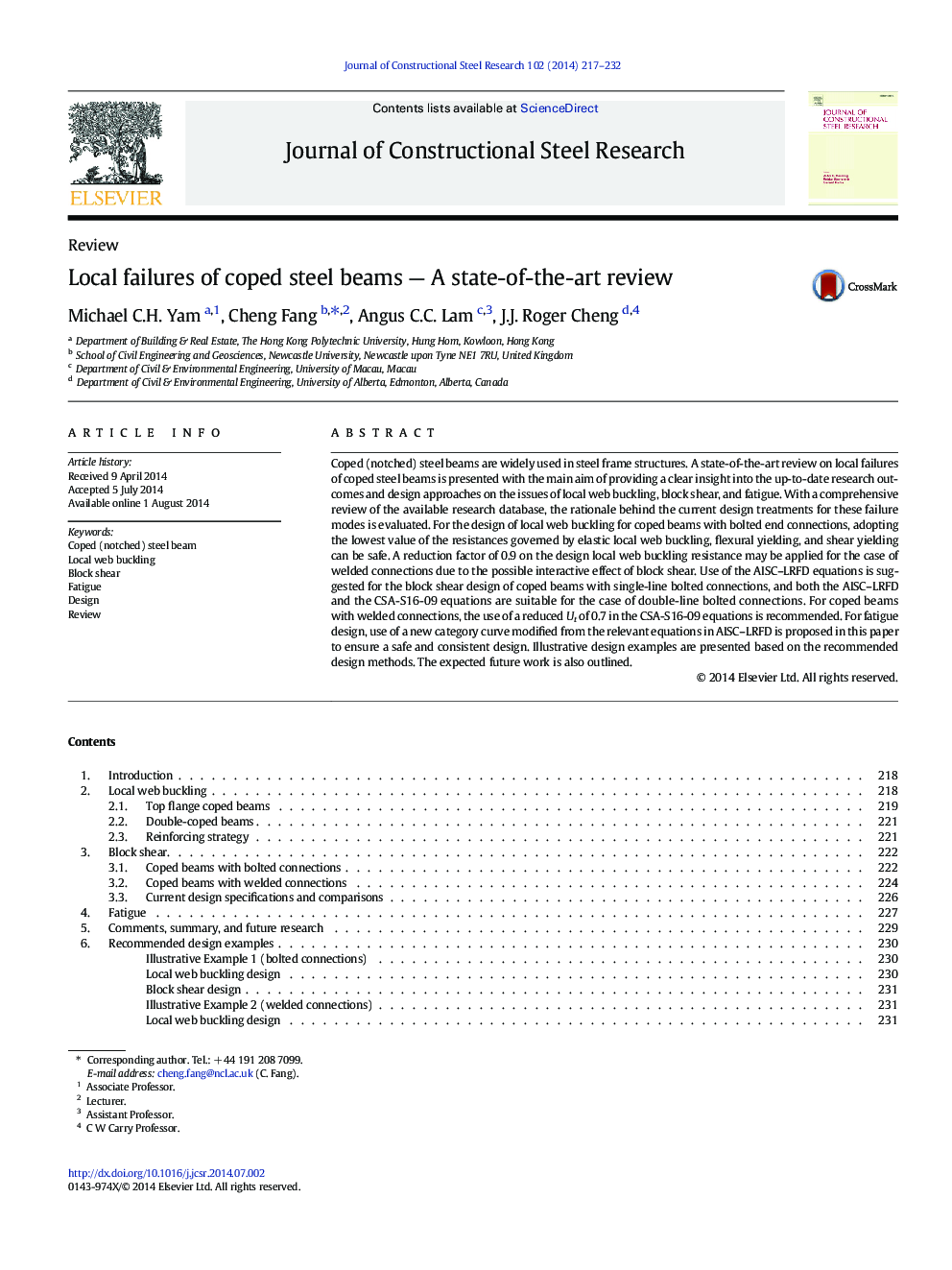| Article ID | Journal | Published Year | Pages | File Type |
|---|---|---|---|---|
| 284612 | Journal of Constructional Steel Research | 2014 | 16 Pages |
•A state-of-the-art review on coped beam design is presented.•Focus is given on local web buckling, block shear, and fatigue.•Up-to-date research outcomes are discussed.•Existing design approaches are examined.•Design recommendations are given based on the review.
Coped (notched) steel beams are widely used in steel frame structures. A state-of-the-art review on local failures of coped steel beams is presented with the main aim of providing a clear insight into the up-to-date research outcomes and design approaches on the issues of local web buckling, block shear, and fatigue. With a comprehensive review of the available research database, the rationale behind the current design treatments for these failure modes is evaluated. For the design of local web buckling for coped beams with bolted end connections, adopting the lowest value of the resistances governed by elastic local web buckling, flexural yielding, and shear yielding can be safe. A reduction factor of 0.9 on the design local web buckling resistance may be applied for the case of welded connections due to the possible interactive effect of block shear. Use of the AISC–LRFD equations is suggested for the block shear design of coped beams with single-line bolted connections, and both the AISC–LRFD and the CSA-S16-09 equations are suitable for the case of double-line bolted connections. For coped beams with welded connections, the use of a reduced Ut of 0.7 in the CSA-S16-09 equations is recommended. For fatigue design, use of a new category curve modified from the relevant equations in AISC–LRFD is proposed in this paper to ensure a safe and consistent design. Illustrative design examples are presented based on the recommended design methods. The expected future work is also outlined.
